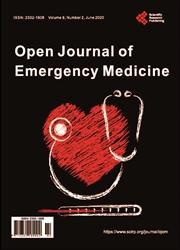Critical Analysis of the Healthcare Response to Burn-Pit-Related Illnesses for Post-9/11 Iraq and Afghanistan Veterans
引用次数: 1
Abstract
A serious concern among post-9/11 Iraq and Afghanistan veterans (IAV) are health conditions from military and environmental exposure while serving. Many veterans are becoming suddenly ill and experiencing symptoms that have been associated with exposure to burning trash or “burn pits” set up to destroy waste produced by the military. IAVs are exhibiting respiratory conditions and other numerous health issues from exposure to burn pits during deployments. From the US military operations to the Middle East, 70% of the military personnel reported respiratory illnesses, with 17% experiencing symptoms serious enough to require medical care. Despite growing concerns, little research has been conducted on the health conditions of returning veterans. Many veterans have difficulty gaining appropriate access to care, unable to travel long distances to Veterans health facility, or have to deal with long wait times to see a provider. As a result, many veterans utilize civilian emergency rooms and healthcare facilities. Most healthcare facilities are not familiar with military-related health conditions. To address and prevent delays in care, it is helpful to have a veteran-specific screener questionnaire at the point of healthcare access. Getting a better understanding of the background and history of veterans can aid in accurately triaging this community and lead to better health care outcomes. Collecting and maintaining data regarding health issues that can arise from burn pit exposures can help direct the care of this specific community of veterans. In seeking to improve the understanding of IAV health issues from exposure to burn pits, the aim of this article is to help educate and raise awareness, and assist health care professionals to better triage and direct the care or resources necessary to help this underserved and at-risk community of our veterans.9/11后伊拉克和阿富汗退伍军人烧伤坑相关疾病的医疗反应的关键分析
9/11后伊拉克和阿富汗退伍军人(IAV)严重关切的是服役期间暴露在军事和环境中的健康状况。许多退伍军人突然生病,并出现与接触燃烧的垃圾或为销毁军队产生的废物而设置的“燃烧坑”有关的症状。IAV在部署期间暴露在烧伤坑中,表现出呼吸系统疾病和其他许多健康问题。从美国到中东的军事行动中,70%的军事人员报告患有呼吸道疾病,17%的人出现严重症状,需要医疗护理。尽管人们越来越担心,但很少有人对回国退伍军人的健康状况进行研究。许多退伍军人很难获得适当的护理,无法长途前往退伍军人医疗机构,或者不得不等待很长时间才能见到提供者。因此,许多退伍军人使用民用急诊室和医疗设施。大多数医疗机构不熟悉与军事相关的健康状况。为了解决和防止护理延误,在获得医疗保健的时候,有一份针对退伍军人的筛查问卷是很有帮助的。更好地了解退伍军人的背景和历史可以帮助准确地对这个社区进行分类,并带来更好的医疗保健结果。收集和维护烧伤坑暴露可能引起的健康问题的数据有助于指导对这一特定退伍军人群体的护理。为了提高人们对暴露在烧伤坑中的IAV健康问题的理解,本文的目的是帮助教育和提高认识,并帮助卫生保健专业人员更好地进行分类,并指导必要的护理或资源,以帮助我们退伍军人这一服务不足和面临风险的社区。
本文章由计算机程序翻译,如有差异,请以英文原文为准。
求助全文
约1分钟内获得全文
求助全文

 求助内容:
求助内容: 应助结果提醒方式:
应助结果提醒方式:


